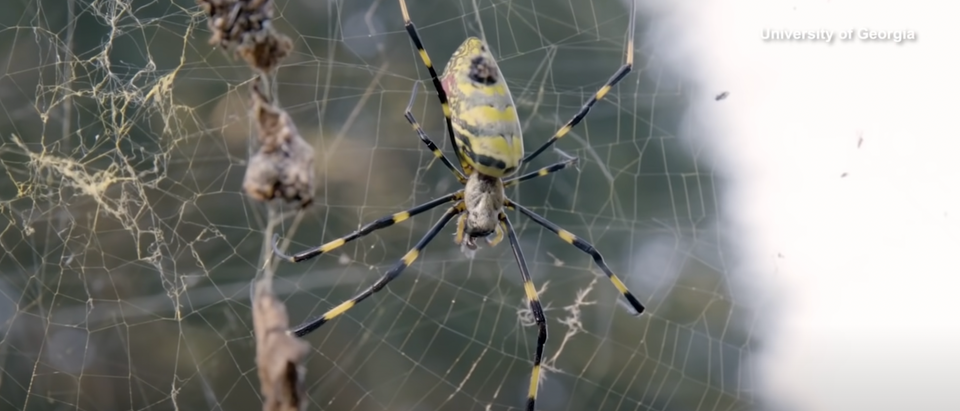It’s a bird … it’s a plane … it’s a giant parachuting spider?
Parachuting spiders, known as Joro spiders, touched down in U.S. states across the East Coast and are expected to spread in years to come, according to a new study from Clemson University published in October.
Giant parachuting spiders ‘spreading like wildfire’ across the East Coast https://t.co/a9wIDVt6E5 pic.twitter.com/dZ7diW5T3q
— New York Post (@nypost) November 2, 2023
The Joro spiders, characterized by their yellow and gray abdomens, exploded in population since arriving in the United States from shipping containers from Asia nearly one decade ago, the New York Post reported. Ecosystems in North Carolina, South Carolina and Georgia have served as a new home for the parachute-weaving arachnids, and there have also been recent sightings in Alabama, Maryland, Oklahoma and West Virginia, according to the study. The spiders are “here to stay,” the Clemson study reads.
“They are spreading like wildfire,” lead researcher David Coyle said. “Data show that this spider is going to be able to inhabit most of the eastern U.S.”
Joro spiders have no natural predators within the U.S. and are able to enjoy an abundance of food, allowing them to thrive, according to the NY Post. A parachuter will consume almost anything ensnared in its web, and they do not hesitate to assert their dominance over other spiders in the area.
“These spiders don’t seem to care what gets in their web; they’re just as likely to eat brown marmorated stink bugs as they are to eat a Monarch butterfly,” Coyle said. (RELATED: Spider Nests On Woman’s Eardrum, Causing ‘Incessant Clicking And Rustling Sounds’)
Joro spiders tend to avoid entering homes as they prefer to spin webs outdoors along buildings. However, if one ends up indoors, it is easier to scare the spider away rather than hire an exterminator, per the NY Post. Although they are large and venomous, parachuting spiders do not pose a real threat due to their small fang size.
“Pesticides work, but, also, they are probably overkill because it will kill everything else, and there is a cost involved; it’s just as easily to physically move them if they are on your house,” Coyle said. “They seem to love structures. So, I just tell people to take a stick or broom and remove them.”


